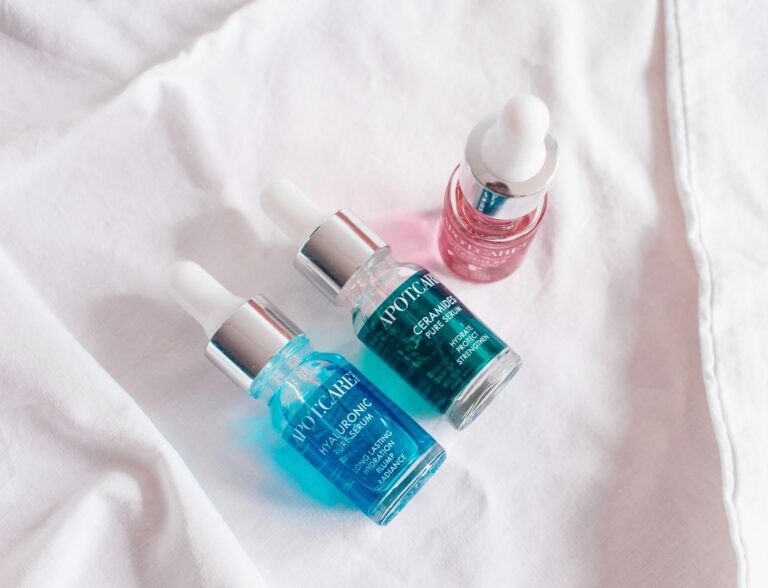
In recent years, jawline fillers in the UK have gained significant popularity, emerging as a preferred option for individuals aiming for a more defined and youthful appearance.
These injectable treatments not only enhance facial symmetry but also address age-related changes, making them an attractive choice for many people. This article will delve into what jawline fillers are, how they function, their benefits and risks, and who qualifies as a suitable candidate.
Additionally, it will cover the administration process, recovery time, and alternative options. Whether you are simply curious about the treatment or seeking to better understand this beauty trend, all the information you need will be available here.
What Are Jawline Fillers?

Jawline fillers have become a popular option in the world of cosmetic treatments. They are a type of dermal filler specifically used to enhance facial structure and definition, with a particular focus on the jawline area.
These aesthetic enhancements aim to improve facial symmetry and contour the jawline, offering individuals a non-surgical way to achieve their beauty standards. Typically composed of hyaluronic acid, these fillers can deliver transformative results for those looking for a more defined and youthful appearance.
As the popularity of these non-invasive procedures continues to rise, it is crucial to understand the various options available and how they can align with one’s aesthetic goals.
How Do Jawline Fillers Work?
Jawline fillers operate by employing injection techniques to introduce volumising agents, primarily hyaluronic acid, into specific areas of the jawline, thereby enhancing its definition. This procedure encourages collagen production in the skin, which contributes to a more youthful appearance while improving facial symmetry and balance.
During the procedure, a trained practitioner carefully selects particular points along the jawline to administer the injections, concentrating on areas where natural volume may have diminished or where sharper contours are desired. The technique typically incorporates both linear and micro-droplet methods to ensure an even distribution of the filler, resulting in a smooth and natural-looking enhancement.
Patients can anticipate immediate results, as the filler not only adds volume but also stimulates skin elasticity over time. The use of hyaluronic acid is especially advantageous, as it attracts moisture and provides a plumping effect. This enhances the overall texture and tone of the skin, ensuring that the outcome is both subtle and impactful.
Why Are Jawline Fillers Popular in the UK?
Jawline fillers have gained significant popularity in beauty clinics across the UK, primarily due to their ability to deliver immediate results without the need for invasive surgical procedures. This trend reflects a growing interest in non-surgical beauty treatments aimed at enhancing facial aesthetics and improving overall appearance, with the price of dermal fillers playing a key role in making these enhancements accessible to a wider audience.
The cultural shift towards embracing sculpted features can be largely attributed to the influence of beauty standards promoted by social media platforms. Influencers and celebrities frequently showcase their polished looks, setting trends that many aspire to emulate. Additionally, user-generated content featuring client testimonials has further amplified this trend, as individuals share their successful journeys and transformed jawlines, encouraging others to consider similar treatments.
As younger generations seek to express their uniqueness and confidence through tailored beauty solutions, the acceptance of fillers as a viable, cost-effective, and non-permanent option has become increasingly widespread. This reflects an evolving attitude toward beauty and self-expression in today’s society.
What Are the Benefits of Jawline Fillers?

The benefits of jawline fillers go beyond just aesthetics; they provide patients with a variety of advantages that can greatly enhance their overall appearance and boost their confidence.
By addressing issues like volume loss and improving facial symmetry, these cosmetic treatments can truly transform an individual’s facial profile and structure. This often results in the restoration of youthful contours and a sense of balance that many find attractive.
1. Improved Facial Symmetry
One of the primary advantages of jawline fillers is their ability to enhance facial symmetry, contributing to a more harmonious appearance. When administered by skilled aesthetic practitioners, fillers can correct asymmetrical features, resulting in a well-balanced facial structure.
This procedure not only refines the jawline but also plays a crucial role in improving the overall proportions of the face. Techniques such as lateral augmentation can be utilised to subtly expand the jawline, creating a more defined and attractive contour.
By concentrating on the chin and surrounding areas, practitioners can achieve a cohesive look that honours the natural balance of facial features.
As a result, these enhancements can elevate an individual’s aesthetic appeal, making them appear more youthful and proportionate. Additionally, the improvements in facial harmony can significantly boost self-confidence.
2. Enhanced Definition of the Jawline
Jawline fillers are quite effective in enhancing the definition of the jawline, resulting in a sharper and more contoured appearance. This enhancement can lead to a significant improvement in one’s facial profile, giving it a more youthful and sculpted look.
By strategically injecting dermal fillers into targeted areas, such as the chin, jawline angle, and even the pre-jowl sulcus, individuals can achieve impressive contouring results. Techniques that involve a gradual layering of the product help ensure that the enhancements flow naturally and harmoniously with the rest of the face.
As a result, the jawline gains definition and contributes to an overall balanced profile, which can boost one’s self-confidence.
The aesthetic benefits of a well-defined jawline go beyond just appearance; they often result in a more striking and dynamic facial structure, appealing to those who desire a refined look.
3. Reversal of Age-Related Changes
Jawline fillers play a significant role in addressing age-related changes by restoring volume and structure to areas that may have lost their definition over time. This rejuvenation technique allows individuals to regain a more vibrant and youthful appearance.
As the skin ages, it often experiences reduced elasticity and fat loss, which can lead to sagging and a less defined jawline. By utilising these fillers, individuals can effectively counteract this decline; the injectables not only provide added volume but also enhance the natural contours of the face.
The subtle enhancements achieved through this treatment can rejuvenate one’s profile, creating the impression of tighter skin and a more youthful silhouette. This approach is essential for those looking to maintain their facial aesthetics and confidence, making jawline fillers a vital component of the modern anti-ageing toolkit.
What Are the Risks and Side Effects of Jawline Fillers?

While jawline fillers provide a variety of benefits, it is crucial to recognise the potential risks and side effects, including the possibility of filler migration, that may accompany the procedure.
By understanding these risks and how to mitigate them, individuals can make informed decisions and enhance their satisfaction with the results of their treatment.
1. Swelling and Bruising
Swelling and bruising are common side effects that can occur after receiving jawline fillers, often resulting from the injection process itself. Typically, these effects subside within a few days, although individual recovery times can vary.
For many individuals, the first 48 hours after treatment may involve moderate discomfort, which can be disheartening for those eager to see immediate results. While most people recover quickly, some might experience lingering effects that last beyond a week, which can impact their overall treatment experience.
It is important to understand that these side effects can temporarily affect one’s appearance, potentially leading to feelings of self-consciousness during this critical healing period. Therefore, it is advisable for clients to plan accordingly, allowing sufficient time for recovery before any significant events.
This foresight can enhance comfort and reassurance, ultimately resulting in a more satisfying treatment journey.
2. Allergic Reactions
While allergic reactions to the filler products used in jawline enhancements are quite rare, it is essential to consult with qualified aesthetic practitioners prior to undergoing treatment. Recognising the potential for allergic reactions is vital for ensuring patient safety and satisfaction.
These skilled professionals not only review the patient’s medical history but also conduct thorough evaluations to identify any possible sensitivities to the ingredients in the fillers. This careful consideration is crucial in minimising the risks associated with the procedure.
Different filler products, such as hyaluronic acid and poly-L-lactic acid, can carry varying potential for adverse reactions. Therefore, it is imperative for the practitioner to customise the treatment plan to suit each individual’s unique profile.
By prioritising patient safety through comprehensive assessments, the likelihood of allergic responses can be significantly reduced, leading to a more confident and satisfying aesthetic experience.
3. Infection
Infection is a potential risk associated with jawline fillers, a concern that arises with any procedure involving injections. Adhering to proper aftercare guidelines is essential for minimising the risk of infection and achieving optimal treatment results.
Infections can lead to complications such as swelling, redness, and discomfort, which may necessitate additional medical intervention. To help prevent these side effects, it is important for individuals to prioritise hygiene both before and after the procedure.
- This includes keeping the injection site clean and avoiding unnecessary contact with the area.
- Additionally, it is advisable to refrain from engaging in strenuous activities and exposing the treated area to excessive heat for a few days following the treatment to help reduce inflammation.
Wearing make-up over the treated area should also be avoided until it is fully healed. By following these precautions and using any prescribed medications or topical treatments as needed, individuals can significantly reduce the likelihood of infection and associated side effects.
4. Nerve Damage
Although it is quite rare, nerve damage can occur as a complication of jawline filler injections, especially if the procedure is not carried out by skilled practitioners using precise injection techniques. It is important for prospective patients to understand this risk when considering jawline enhancement.
Inadequate training or a lack of experience can result in improper placement and potential complications during the procedure. Therefore, patients should prioritise finding injectors who possess extensive knowledge of facial anatomy and adhere strictly to safe practices throughout the treatment.
By taking a careful approach in selecting a reputable provider, patients can reduce the likelihood of complications, including the risk of nerve injuries. Engaging in thorough consultations where all concerns, risks, and expected outcomes are openly discussed is essential before making any decisions regarding their aesthetic journey.
Who Is a Good Candidate for Jawline Fillers?

Individuals who are good candidates for jawline fillers typically seek non-surgical options to enhance their facial profile and achieve specific aesthetic goals. A comprehensive facial analysis conducted by an experienced practitioner can help assess their suitability and outline the expected outcomes.
These candidates often represent a range of demographics, including both young adults and middle-aged individuals who desire improvements in facial symmetry, contour, and definition. It is essential for them to maintain realistic expectations regarding the results, recognising that fillers are intended to provide subtle enhancements rather than dramatic transformations.
Potential candidates should demonstrate a strong motivation for pursuing this treatment and have a clear understanding of how it aligns with their personal beauty standards. The most favourable outcomes are generally observed in those who prioritise natural-looking results and are receptive to professional guidance on maintaining facial harmony.
How Are Jawline Fillers Administered?
The administration of jawline fillers requires precise injection techniques carried out by skilled practitioners. This careful approach is essential to achieve optimal results while minimising any associated risks. The process begins with identifying specific treatment areas where the filler will be applied to effectively enhance the jawline.
Once the practitioner has assessed the patient’s facial anatomy and discussed their aesthetic goals, they will develop a tailored treatment plan that caters to the individual’s unique needs. Typically, the practitioner will mark the areas on the jawline where the filler will be injected to ensure a balanced and natural appearance.
Next, a local anaesthetic may be administered to enhance comfort during the procedure. The filler, which is usually based on hyaluronic acid, is then carefully injected into strategic locations along the jawline. Each injection must be precise to achieve the desired contour while preserving the natural structure of the face.
Throughout this process, patient education plays a crucial role. The practitioner must take the time to explain what the patient can expect during and after the treatment, addressing any concerns and ensuring that the patient feels well-informed and comfortable.
What Is the Recovery Process Like for Jawline Fillers?
The recovery process for jawline fillers is generally quite swift, allowing most individuals to resume their normal activities in a relatively short time. It is essential to follow aftercare guidelines to ensure a smooth recovery and to optimise the results of the treatment.
Patients can typically expect minimal downtime, with any swelling or bruising usually subsiding within a few days to a week. During this recovery period, it is advisable to avoid strenuous exercise, excessive heat, and direct sunlight on the treated area, as these factors could worsen any side effects.
After the procedure, patients should also focus on staying hydrated, refrain from consuming alcohol, and follow any specific instructions provided by their practitioner. By taking these precautions, individuals not only enhance their safety but also significantly increase their satisfaction with the overall results of the treatment.
How Long Do Jawline Fillers Last?
The longevity of jawline fillers can vary due to several factors, including the type of filler used, the individual’s skin type, and their overall lifestyle choices. Most jawline fillers provide long-lasting effects, delivering noticeable results for several months.
Typically, individuals can expect the effects to last anywhere from 6 to 18 months, depending on these variables. For example, thicker hyaluronic acid fillers tend to maintain their effectiveness longer than thinner options.
Metabolism and collagen production are also significant factors in how quickly the body breaks down the filler material. Those who lead a healthy lifestyle, including proper hydration and sun protection, may experience more prolonged results.
To achieve optimal and lasting results, it is advisable for patients to consult with qualified practitioners about potential maintenance treatments and personalised timelines.
What Are the Alternatives to Jawline Fillers?

While jawline fillers are a widely favoured option for non-surgical enhancement, individuals seeking different methods of facial contouring may want to explore alternatives such as chin augmentation or surgical procedures. These options can provide varying degrees of enhancement based on one’s aesthetic goals.
For those contemplating a more permanent solution, surgical chin augmentation offers a significant and lasting change through implants or bone reshaping. This approach delivers a well-defined jawline and enhances overall facial harmony, though it does come with extended recovery times and potential surgical risks.
Conversely, minimally invasive procedures like radiofrequency treatments and thread lifts can offer subtle improvements in skin tightness and contouring without the commitment associated with surgery. This makes them an attractive choice for those looking to avoid downtime.
It is crucial to carefully consider the benefits and drawbacks of each option in relation to personal preferences and desired outcomes.
Frequently Asked Questions
What are jawline fillers and how do they redefine facial symmetry in the UK?
Jawline fillers are a cosmetic procedure in which facial fillers are injected into the jawline to enhance and redefine its appearance. This is done to add volume, definition, and contour to the jawline, resulting in a more balanced and symmetrical facial structure. This procedure is gaining popularity in the UK as it can significantly improve the overall appearance of the face.
What kind of fillers are used in jawline fillers in the UK?
The most common fillers used for jawline fillers in the UK are hyaluronic acid-based fillers. These fillers are safe, effective, and provide natural-looking results. They also have the advantage of being temporary, which means the effects can be reversed if desired.
How long do jawline fillers last in the UK?
The duration of results from jawline fillers in the UK can vary from person to person. Generally, hyaluronic acid-based fillers last between 6-12 months, while more long-lasting fillers such as calcium hydroxylapatite can last up to 18 months.
Are jawline fillers in the UK a painful procedure?
The level of discomfort during jawline filler injections can vary from person to person. However, most patients report minimal pain, as the fillers are typically combined with a local anesthetic to reduce any discomfort. Similar to under-eye fillers, many jawline fillers also contain lidocaine, a numbing agent that further minimises pain during the procedure.
What is the recovery process like for jawline fillers in the UK?
The recovery process for jawline fillers in the UK is relatively quick and easy. Some mild swelling, bruising, and tenderness at the injection site may occur, but these side effects typically subside within a few days. Patients can resume their normal daily activities immediately after the procedure, but it is recommended to avoid strenuous exercise for 24-48 hours.
Are there any risks or complications associated with jawline fillers in the UK?
As with any cosmetic procedure, there are some potential risks and complications associated with jawline fillers in the UK. These can include bruising, swelling, infection, and allergic reactions. However, by choosing a qualified and experienced practitioner and following proper aftercare instructions, the chances of experiencing these complications can be minimised.






